The history of Florida can be traced to when the first Native Americans began to inhabit the peninsula as early as 14,000 years ago. They left behind artifacts and archeological evidence. Florida's written history begins with the arrival of Europeans; the Spanish explorer Juan Ponce de León in 1513 made the first textual records. The state received its name from that conquistador, who called the peninsula La Pascua Florida in recognition of the verdant landscape and because it was the Easter season, which the Spaniards called Pascua Florida.

Slavery in the colonial history of the United States refers to the institution of slavery as it existed in the European colonies which eventually became part of the United States. In these colonies, slavery developed due to a combination of factors, primarily the labour demands for establishing and maintaining European colonies, which had resulted in the Atlantic slave trade. Slavery existed in every European colony in the Americas during the early modern period, and both Africans and indigenous peoples were victims of enslavement by European colonizers during the era.
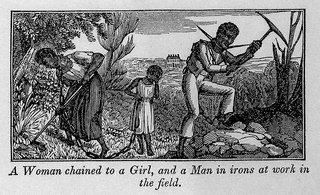
African American history started with the arrival of Africans to North America in the 16th and 17th centuries. Former Spanish slaves who had been freed by Francis Drake arrived aboard the Golden Hind at New Albion in California in 1579. The European colonization of the Americas, and the resulting Atlantic slave trade, led to a large-scale transportation of enslaved Africans across the Atlantic; of the roughly 10–12 million Africans who were sold by the Barbary slave trade, either to European slavery or to servitude in the Americas, approximately 388,000 landed in North America. After arriving in various European colonies in North America, the enslaved Africans were sold to white colonists, primarily to work on cash crop plantations. A group of enslaved Africans arrived in the English Virginia Colony in 1619, marking the beginning of slavery in the colonial history of the United States; by 1776, roughly 20% of the British North American population was of African descent, both free and enslaved.
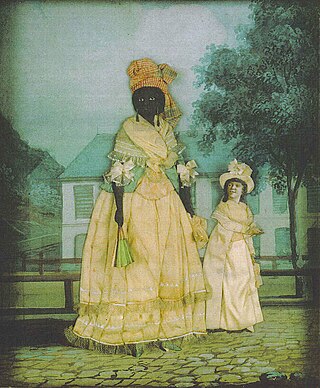
In the British colonies in North America and in the United States before the abolition of slavery in 1865, free Negro or free Black described the legal status of African Americans who were not enslaved. The term was applied both to formerly enslaved people (freedmen) and to those who had been born free, whether of African or mixed descent.
Afro-Caribbean people or African Caribbean are Caribbean people who trace their full or partial ancestry to sub-Saharan Africa. The majority of the modern Afro-Caribbean people descend from the Africans taken as slaves to colonial Caribbean via the trans-Atlantic slave trade between the 15th and 19th centuries to work primarily on various sugar plantations and in domestic households. Other names for the ethnic group include Black Caribbean, Afro or Black West Indian or Afro or Black Antillean. The term Afro-Caribbean was not coined by Caribbean people themselves but was first used by European Americans in the late 1960s.

Slavery in the Spanish American colonies was an economic and social institution which existed throughout the Spanish Empire including Spain itself. Indigenous peoples were enslaved and their populations decimated. Subsequently enslaved Africans were brought over. Native people were also subjected to forced conversions and conscription.

The Black Seminoles, or Afro-Seminoles, are an ethnic group of mixed Native American and African origin associated with the Seminole people in Florida and Oklahoma. They are mostly blood descendants of the Seminole people, free Africans, and escaped former slaves, who allied with Seminole groups in Spanish Florida. Many have Seminole lineage, but due to the stigma of having mixed origin, they have all been categorized as slaves or freedmen in the past.
A freedman or freedwoman is a formerly enslaved person who has been released from slavery, usually by legal means. Historically, slaves were freed by manumission, emancipation, or self-purchase. A fugitive slave is a person who escaped enslavement by fleeing.
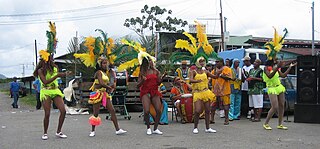
Afro-Costa Ricans are Costa Ricans of African ancestry.

Gwendolyn Midlo Hall was an American historian who focused on the history of slavery in the Caribbean, Latin America, Louisiana, Africa, and the African Diaspora in the Americas. Discovering extensive French and Spanish colonial documents related to the slave trade in Louisiana, she wrote Africans in Colonial Louisiana: The Development of Afro-Creole Culture in the Eighteenth Century (1992), studied the ethnic origins of enslaved Africans brought to Louisiana, as well as the process of creolization, which created new cultures. She changed the way in which several related disciplines are researched and taught, adding to scholarly understanding of the diverse origins of cultures throughout the Americas.
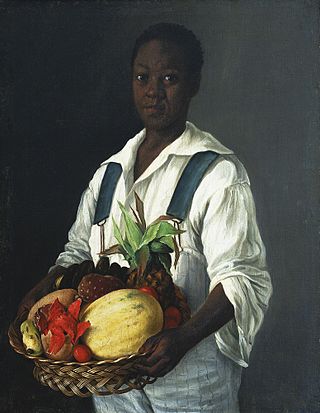
Afro-Mexicans, also known as Black Mexicans, are Mexicans who have heritage from sub-Saharan Africa and identify as such. As a single population, Afro-Mexicans include individuals descended from both free and enslaved Africans who arrived to Mexico during the colonial era, as well as post-independence migrants. This population includes Afro-descended people from neighboring English, French, and Spanish-speaking countries of the Caribbean and Central America, descendants of enslaved Africans in Mexico and those from the Deep South during Slavery in the United States, and to a lesser extent recent migrants directly from Africa. Today, there are localized communities in Mexico with significant although not predominant African ancestry. These are mostly concentrated in specific communities, including the populations of the Oaxaca, Huetamo, Lázaro Cárdenas, Guerrero, and Veracruz states.
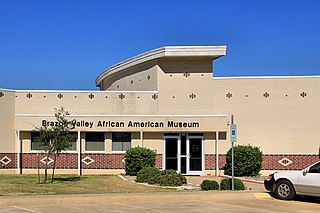
African American Texans or Black Texans are residents of the state of Texas who are of African ancestry and people that have origins as African-American slaves. African Americans formed a unique ethnic identity in Texas while facing the problems of societal and institutional discrimination as well as colorism for many years. The first person of African heritage to arrive in Texas was Estevanico, who came to Texas in 1528.
For a history of Afro-Caribbean people in the UK, see British African Caribbean community.
The history of African Americans in Maryland is long and complex. Southern Maryland is the home of the first person of African descent to be elected to and serve in a legislature in America. His name was Mathias de Sousa and he was one of the original colonists to arrive in 1634. Southern Maryland is also the place where Josiah Henson was enslaved, and the place of brutality he wrote about in his later autobiography, which became the basis for Harriet Beecher Stowe's "Uncle Tom's Cabin".

Slavery in Cuba was a portion of the larger Atlantic Slave Trade that primarily supported Spanish plantation owners engaged in the sugarcane trade. It was practised on the island of Cuba from the 16th century until it was abolished by Spanish royal decree on October 7, 1886.
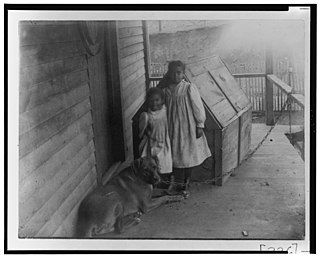
African-American Georgians are residents of the U.S. state of Georgia who are of African American ancestry. As of the 2010 U.S. Census, African Americans were 31.2% of the state's population. Georgia has the second largest African American population in the United States following Texas. Georgia also has a gullah community. African slaves were brought to Georgia during the slave trade.

African Americans in Louisiana or Black Louisianians are residents of the U.S. state of Louisiana who are of African ancestry; those native to the state since colonial times descend from the many African slaves working on indigo and sugarcane plantations under French colonial rule.

Slavery in Florida is more central to Florida's history than it is to almost any other state. Florida's purchase by the United States from Spain in 1819 was primarily a measure to strengthen the system of slavery on Southern plantations, by denying potential runaways the formerly safe haven of Florida.
Paulina Pedroso was the most prominent female leader in the Cuban War of Independence. She worked directly with José Martí.
Civil rights in the United States include noted legislation and organized efforts to abolish public and private acts of racial discrimination against Native Americans, African Americans, Asians, Latin Americans, women, the homeless, minority religions, and other groups since the independence of the country.













